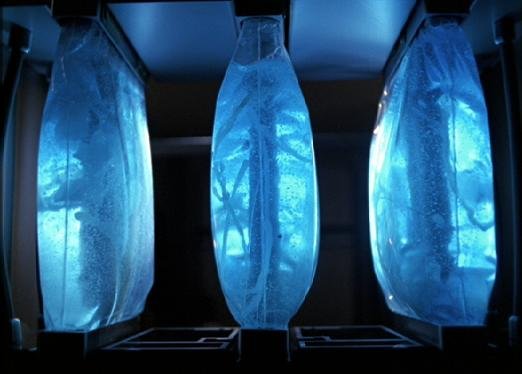Biological Computers
London, UK - 30th August 2009, 15:55 GMT
Dear ATCA Open & Philanthropia Friends
[Please note that the views presented by individual contributors are not necessarily representative of the views of ATCA, which is neutral. ATCA conducts collective Socratic dialogue on global opportunities and threats.]
Biological Computers -- built from DNA and Neurons -- are so tiny that billions of them fit in a test tube and can perform more than a billion operations per second. Scientists are devising a new generation of fast and flexible biological computers that can work out for themselves how to solve a problem, rather than having to be told exactly what to do.
Ordinary computers need absolutely correct information every time to come to the right answer. Biological computers seek to arrive at the correct answer based on partial information, by filling in some of the gaps themselves. Some of the biological computers being built can "think for themselves" because the biological components -- DNA and neurons -- are able to form their own connections from one to another. Normal silicon computers only make the connections they are told to by the programmer. This flexibility means the biological computers can work out their own way of solving the problem. With the neurons and DNA, we only have to direct them towards the answer and they can get it themselves!
 Biological Computing
Biological Computing
The biological approach to computing is particularly suited to pattern recognition tasks like facial recognition in millions, comparing handwriting etc. which would take enormous amounts of power to do well on a conventional computer. In the beginning, the biological computing components -- neurons or DNA -- are harnessed in a petri dish by inserting micro- or nano- electrodes into them. Each biological component has its own electrical activity and responds in its own way to an electrical stimulus. These features can be used to make each biological component represent a number or set element. Calculations are then performed by linking up the individual biological components.
Though much simpler, the biological computers work in a similar way to the human brain. Biological computing researchers aim to build a robot brain in the long-term, noting that conventional supercomputers are far too big for a robot to carry around! Scientists want to be able to integrate robotics, electronics and biological computing so that more sentient machines can be built in the near future. The age of sentient machines is coming as the Bio, Info and Nano (BIN) revolution gathers pace!
The 82nd image added to the "E8 Album" within the HQR initiative is of Biological Computers! Visit here to view the image and to contribute to the Socratic dialogue. The "E8 Album" photos at are visual intersections of Spirituality, Science, Art and Sustainability! Feel free to share the images by clicking share or you can tag yourself!
[ENDS]
We welcome your thoughts, observations and views. To reflect further on this subject and others, please respond within Twitter, Facebook and LinkedIn's ATCA Open and related discussion platform of HQR. Should you wish to connect directly with real time Twitter feeds, please click as appropriate:
. ATCA Open
. @G140
. mi2g Intelligence Unit
. Open HQR
. DK Matai
Best wishes

